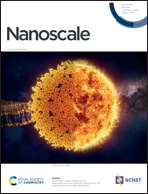First-row transition metal carbide nanosheets as high-performance cathode materials for lithium–sulfur batteries†
Abstract
Despite the prodigious potential of lithium–sulfur (Li–S) batteries as future rechargeable electrochemical systems, their commercial implementation is hindered by several vital issues, including the shuttle effect and sluggish migration of lithium-polysulfides leading to rapid capacity fading. Here, we systematically investigate the potential of first-row two-dimensional transition metal carbides (TMCs) as sulfur cathodes for Li–S batteries. The adsorption strength of lithium-polysulfides on TMCs is induced by the amount of charge transfer from the former to the latter and the proposed periodic relationship between sulfur in Li2S and 3d-transition metals. Our findings show that the VC nanosheet possesses immense anchoring potential and exhibits a comparatively low migration energy barrier for lithium-ion and Li2S molecules. Additionally, we report ab initio molecular dynamics simulations for lithiated polysulfide species anchored on a TMC-based model with a liquid-electrolyte medium. The microscopic reaction mechanism, revealed by the evolution of the reaction voltage during lithiation, demonstrates that the dissolution of high-order lithium-polysulfides in the electrolytes can be prevented due to their robust interaction with TMC-based cathode materials. These appealing features suggest that TMCs present colossal performance improvements for anchoring lithium-polysulfides, stimulating the active design of sulfur cathodes for practical Li–S batteries.



 Please wait while we load your content...
Please wait while we load your content...